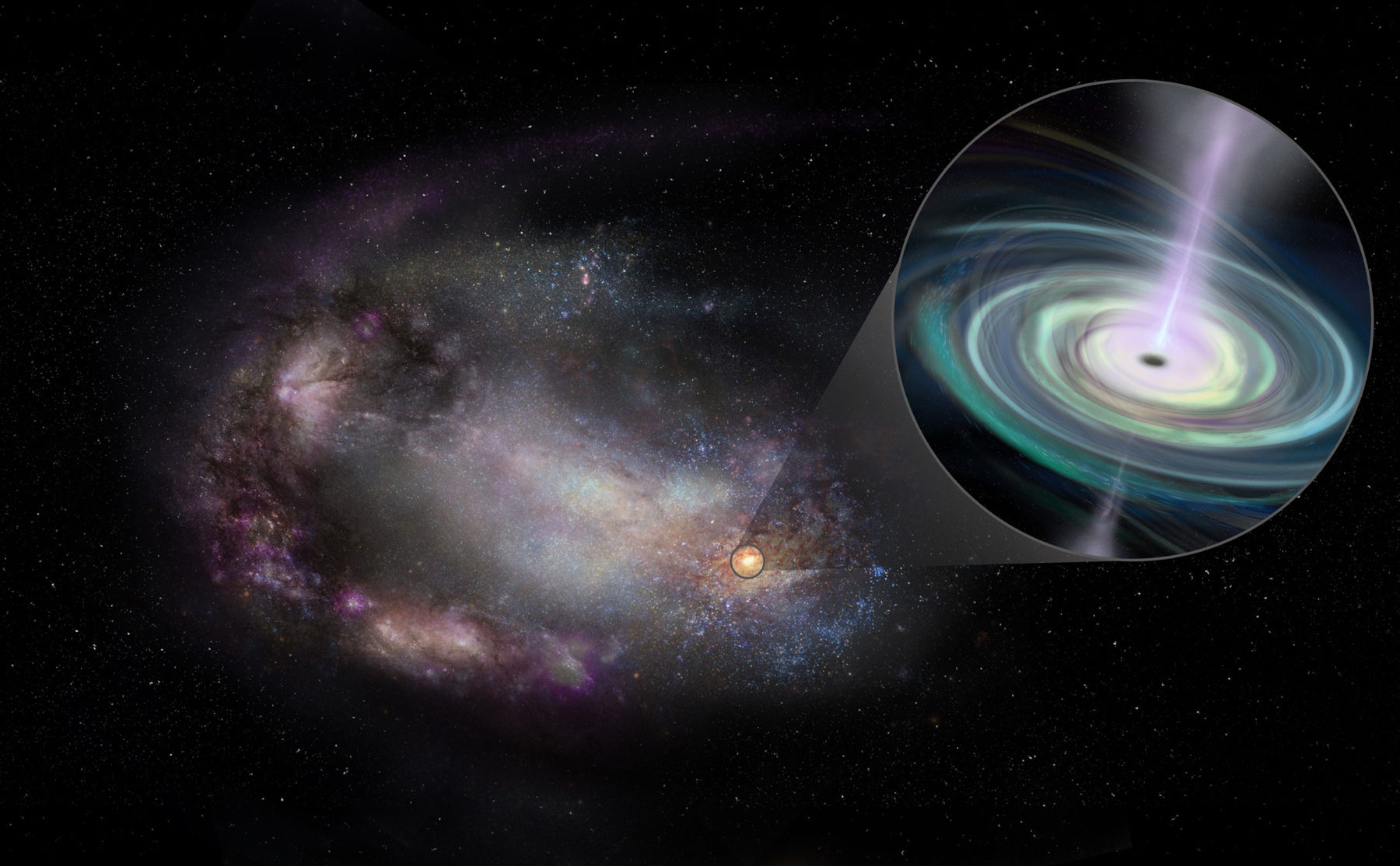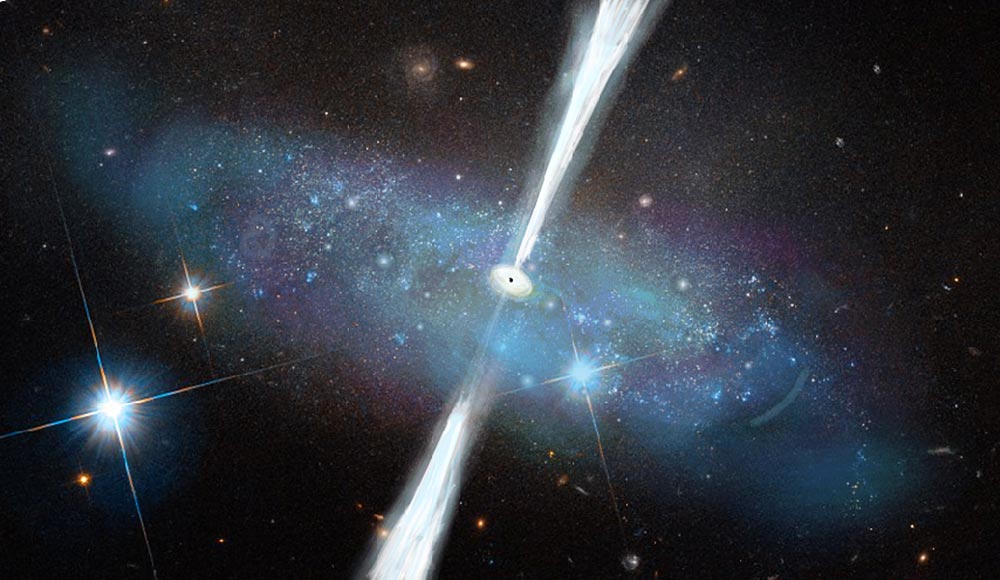
This Hubble image shows the dwarf galaxy IC 4870. This dwarf galaxy has an active supermassive black hole. NASA/ESA/HST
At the core of almost every galaxy, there is a supermassive black hole. While these behemoths spend most of their lives placid and quiet, once they get an influx of material they can produce jets that create powerful winds that spread throughout their host galaxy.
These processes shape galaxies both big and small, but a new study shows that diminutive objects are more strongly affected by supermassive black holes. The strong winds produced by the black holes are stunting the evolution of dwarf galaxies by suppressing star formation.
Dwarf galaxies are galaxies that have between 100 million and just a few billion stars. They are the most common type of galaxy and often orbit larger galaxies. The Milky Way, for scale, has between 200 billion and 400 billion stars.
In the study, published in The Astrophysical Journal, the team looked at 50 dwarf galaxies, 29 of which had some hallmarks of having an active black hole at their core. They found that 13 of these galaxies were actually losing gas into intergalactic space, with the gas outflow moving faster than the galaxy’s escape velocity. Nine of them have an active supermassive black hole at their core and in six of these, the gas outflow was, without a doubt, being pushed out by the black hole.

“Dwarf galaxies are the smallest galaxies in which we are directly seeing winds—gas flows up to 1,000 kilometers per second—for the first time,” first author Christina M. Manzano-King, from UC Riverside, said in a statement.
“What’s interesting is that these winds are being pushed out by active black holes in the six dwarf galaxies rather than by stellar processes such as supernovae. Typically, winds driven by stellar processes are common in dwarf galaxies and constitute the dominant process for regulating the amount of gas available in dwarf galaxies for forming stars.”
Galactic winds are a double-edged sword when it comes to star formation. The winds compress the gas as they move out from the black hole, which can help star formation. But they can also disrupt it, as they disperse the gas from the center of the galaxy, making it unavailable for the next generation of stars.

“In these six cases, the wind has a negative impact on star formation,” co-author Laura Sales, an assistant professor of physics and astronomy at UC Riverside, revealed. “Theoretical models for the formation and evolution of galaxies have not included the impact of black holes in dwarf galaxies. We are seeing evidence, however, of suppression of star formation in these galaxies.”
The researchers were surprised that the signals they detected, thanks to the Keck telescopes in Hawaii, were so clear.

“We expected we would need observations with much higher resolution and sensitivity, and we had planned on obtaining these as a follow-up to our initial observations,” said Gabriela Canalizo, a professor of physics and astronomy at UC Riverside, who led the research team. “But we could see the signs strongly and clearly in the initial observations. The winds were stronger than we had anticipated.”
The research show that supermassive black holes are very important regulators of star-formation. The team now plans to study the amount of gas and the momentum of these outflows to better understand their wider impact.





